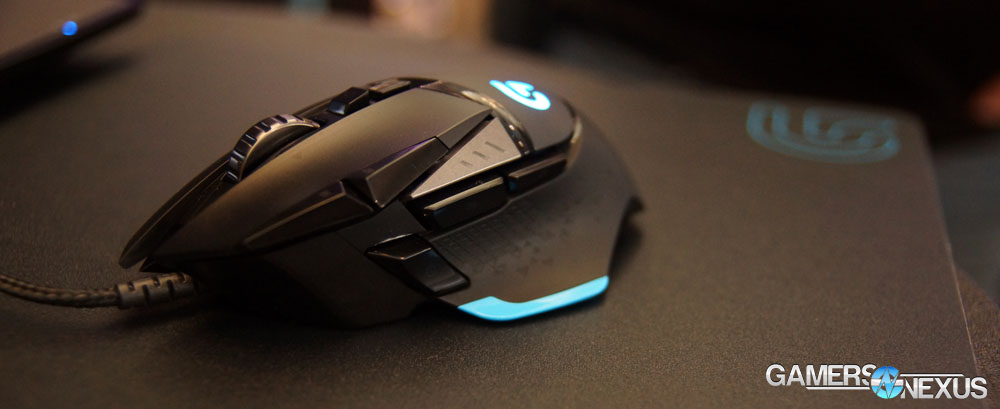PAX East: Logitech G502 Proteus Core Gaming Mouse Hands-On - Switch Tech, More
Posted on
Logitech’s Proteus Core “tunable gaming mouse” was announced leading into PAX East 2014, but we only just got hands-on with the mouse on Saturday. The company is making big promises with this one – we’ve been told on numerous occasions that the sensor is the best they’ve ever used, the “best on the market,” the fastest, the most accurate, and so forth. We’ll be doing a full tear-down and review in the near future, so hang tight on purchases for that, but let’s talk hardware in the meantime.
G502 Proteus Core Gaming Mouse Hands-On Video
In the above video, Product Manager Chris Pate walks us through the top-level items of the mouse and some of the lower-level features, like switch types, acceleration, and surface tuning. Key differentiating features with the Proteus core include individual keyplates on LMB + RMB, surface-tuning, micro switches for every button, and the new (yet unnamed) sensor. Perhaps more importantly, this model ditches smoothing, acceleration, and other undesirable sensor features for gaming.
My initial expectation of surface-tuning was that it’d be largely marketing-driven without much actual change in sensor behavior – but maybe Intel, AMD, and nVidia have left me more skeptical of presentations in convention environments. Upon seeing the tuning work in person, it did actually seem to have a legitimate impact on sensor performance and behavior with various surfaces. In the demo, Pate ‘tuned’ the sensor for a sheet of white paper, a black mousepad (hard surface), and a bumpy/black table (dubbed “Thing” in the mouse profile).
Logitech’s default setting has the mouse performing adequately on all surfaces, though as expected, it underperforms on white paper and the sub-optimal table. When tuned for each of these surfaces, we saw fairly significant improvement in tracking accuracy and speed for the respective material. Tuning for white paper meant the mouse moved with much more precision on the paper, but sacrificed its performance on the black mouse pad. If nothing else, this at least gives the impression that it’s doing something. I’ll have to play more with it once we have our review sample.
The mouse stores all tuning settings, DPI settings, multikey macros, the report rate, and button mapping locally, so software is not required once programmed and the device can be moved to Linux installs and retain its functionality. All the buttons use micro switches, which give a bit more of a click-y response when pressed and ensure longer life of the buttons (as opposed to dome and tac switches). The individual keyplates (as opposed to the usual monolithic keyplate) for LMB and RMB theoretically give us a more perpendicular switch press when using the buttons; the usual monolithic keyplate on mice (one button split between LMB and RMB) tends to apply a more sheer / angular force to the switches, which can impact overall feel of the mouse. When asked what pro gamers found to be the most important feature, Logitech told us that the responsiveness of the buttons mattered most.
We’ll be reviewing and tearing apart the mouse in the near future. Check back for the full review shortly (subscribe on YouTube to stay updated) and we’ll let you know if it’s worth buying. MSRP is $80.
- Steve "Lelldorianx" Burke.
